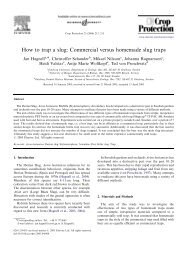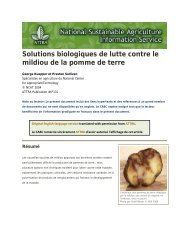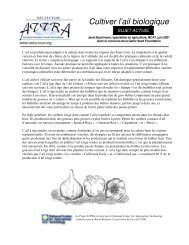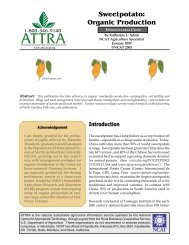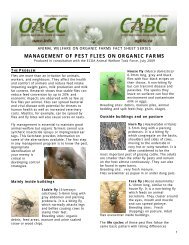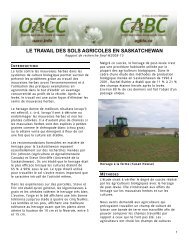Recommended Animal Handling Guidelines and Audit Guide
Recommended Animal Handling Guidelines and Audit Guide
Recommended Animal Handling Guidelines and Audit Guide
- No tags were found...
You also want an ePaper? Increase the reach of your titles
YUMPU automatically turns print PDFs into web optimized ePapers that Google loves.
<strong>Recommended</strong> <strong>Animal</strong> <strong>H<strong>and</strong>ling</strong> <strong><strong>Guide</strong>lines</strong> <strong>and</strong> <strong>Audit</strong> <strong>Guide</strong> 2007 EditionElectrodes must be cleaned frequently to ensure a good electrical connection. The minimumcleaning schedule should be once a day. For personal safety, the electrode w<strong>and</strong> must be disconnectedfrom the power supply before cleaning.Electric Cattle StunningUnlike pigs <strong>and</strong> sheep, electrical stunning of cattle may require a two-phase stun. Due to the largesize of cattle, a current should first be applied across the head to render the animal insensiblebefore a second current is applied from the head to the body to induce cardiac arrest. Modern systemsmay have a third current to reduce convulsions . A single 400 volt, 1.5 amp current passedfrom the neck to the brisket failed to induce epileptic form changes in the brain. Observations inplants outside the U.S. indicate that a single current passed from the middle of the forehead tothe body appears to be effective. Research is needed to verify this. To insure that the electrodesremain in firm contact with the bovine’s head for the duration of the stun, the animal’s head mustbe restrained in a mechanical apparatus. Due to the high electrical resistance of cattle hair, theelectrode should be equipped with a water system to provide continuous wetting during the stun.The Council of Europe (1991) requires a minimum of 2.5 amps applied across the head to induceimmediate epileptiform activity in the electro-encephalogram (EEG) of large cattle. A frequencyof 60 or 50 cycles should be used unless higher frequencies are verified in cattle by either electricalor neurotransmitter measurements taken from the brain. A more recent study has shownthat 1.15 amps sinusoidal AC 50 Hz applied for one second across a bovine’s head is effective toinduce insensibility (Wotton et al., 2000). A longer application is usually required to depolarizethe spine to reduce kicking (up to 15 seconds).CO 2StunningAccording to CFR 9, Section 313.5, CO 2stunning may be used in swine to induce death or toresult in a state of surgical anesthesia. These states are dependent on the relationship betweenexposure time <strong>and</strong> CO 2concentration, <strong>and</strong> systems will produce pigs in both states.H<strong>and</strong>lers must be careful not to overload the gondolas (elevator boxes) that hold groups of pigs.In a properly loaded gondola, the pigs must have sufficient room to st<strong>and</strong> or lie down without beingon top of each other. H<strong>and</strong>lers must never overload the gondolas by forcing pigs to jump ontop of each other.CO 2Stunning ParametersIn the scientific literature, there are conflicting results on how pigs react to the induction of CO 2anesthesia. One researcher found that purebred Yorkshire pigs have a calm induction <strong>and</strong> thatconvulsions <strong>and</strong> excitation occur after the pig becomes unconscious. Some genetic types of pigsactively attempt to escape from the container when they first sniff the gas <strong>and</strong> others respondwith a calm anesthetic induction. Other research has observed that the reaction of pigs to CO 2was highly variable. A Dutch researcher found that the excitation phase occurred prior to theonset of unconsciousness. Australian researchers found that being shocked with an electric prod31AMI<strong>H<strong>and</strong>ling</strong>Slaughter<strong><strong>Guide</strong>lines</strong>07.1AMIJune 11, 2007




